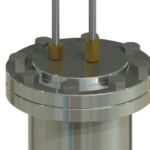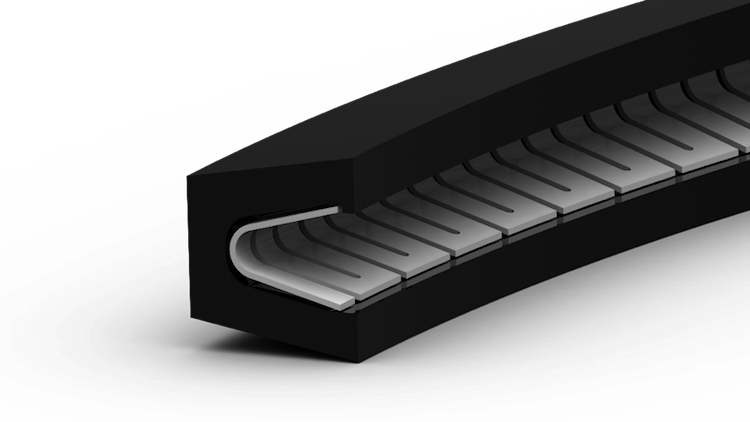Seals for Supercritical CO2 Cannabis Extraction

With the marijuana and cannabis industry taking in nearly $9 billion in 2017 and projected to more than double to $21 billion by 2021, the market is primed for innovation in production volume and technology.
The growth in popularity of vaporizers, infused edibles, and topical cannabis products means the demand for cannabis oil extraction is a fast multiplying industry.
The two primary means for oil extraction is via petroleum based solvents such as butane or propane, or by supercritical fluid extraction (most often carbon dioxide, or CO2).
The Benefits of Supercritical Fluid Extraction
Supercritical Fluid Extraction (SFE) has a few distinct advantages over using petroleum solvents.
- CO2 is a naturally occurring, low toxicity substance, which makes the CO2 extraction process is considered safe by the FDA.
- CO2 can be recycled within the process allowing for low environmental impact
- SFE has the ability to selectively extract multiple types of cannabis compounds such as THCA, CBD, CBG, THCV as well as terpenes.
- The conditional control of the SFE process means less risk to the integrity of the cannabis compounds.
- Most importantly, the CO2 extraction process is considered much safer without the use of volatile and flammable hydrocarbons like butane and propane.
How Supercritical CO2 Cannabis Extraction Works
CO2 has to be in liquid form to be efficiently pumped. So the CO2 extraction process starts with a cooling cycle, often down to -70°F.
Once pumped into a high-pressure chamber, the CO2 can be heated to begin the process of converting into the supercritical state.
Once above a temperature of ~90°F and a pressure of ~1100 PSI, the CO2 will be supercritical where it exhibits the properties of both a gas and a liquid. While having the density of liquid, it will still expand to fill a container like a gas.
The supercritical CO2 is then mixed with the raw cannabis. The extraction pressure is often very high, usually around 5,000 PSI, but this can vary depending on the substance being extracted.
The unique properties of the supercritical CO2 allow it to easily pass through membranes in the cannabis and dissolve the desired oils.
The collection process begins by passing the CO2 with the dissolved compounds into a low-pressure vessel and into a separator. By controlling the pressure, various compounds can be selectively precipitated out.
The CO2 can then be cooled, re-compressed and recycled.
Increased Longevity and Durability Through Eclipse Seals
SFE has been around for decades, and has been used in a wide variety of industries, including decaffeinating coffee and extracting essential oils. But the new and growing demand of the cannabis industry has raised the need for increased volume and reduced cycle time to new heights.
Eclipse has been approached by multiple customers looking for increased longevity and durability of seals in their existing extraction equipment.
Increased duty cycles have proven standard O-Ring and rubber seals have not been up to the task of the heavier use.
While an O-Ring might seal a chamber door of a pressure vessel adequately, it’s only a matter of time before compression set occurs and leakage starts to take place.
An O-Ring in a less accessible part of the extraction equipment might mean costly down-time for replacement.
At Eclipse, we successfully replaced these types of standard seals with spring energized seals utilizing our EH042 Thermoplastic Elastomer material.
The EH042 Advantage
EH042’s exceptional toughness and pliability make it perfect for high pressure gas sealing.
The incorporation of a spring within the seal means compression set will never be an issue and extended service intervals and duty cycles will be possible.

Within a standard CO2 extraction process, EH042 is also virtually immune to explosive decompression unlike many standard rubber products.
The depressurization cycle of the process has the potential to be greatly reduced without risk of damaging the seals, which increases overall productivity.
The Solution to Swelling O-Rings
Some of our customers have reported swelling of O-Rings within the system due to permeation of the CO2.
Swelling can cause over-occupation of the O-Ring groove and potentially result in dynamic components locking up.
Eclipse has multiple seal materials insusceptible to swelling caused by CO2 including EH042 and a wide variety of PTFE blends.
->We also provide sealing solutions to newly designed SFE equipment that’s intended to take production volume and capacity to the next level.
This means larger vessels, increased pressures and flow-rates all stressing seal components more than ever. Our spring energized seals can ensure optimal pressure handling and a long service life of the whole system.





